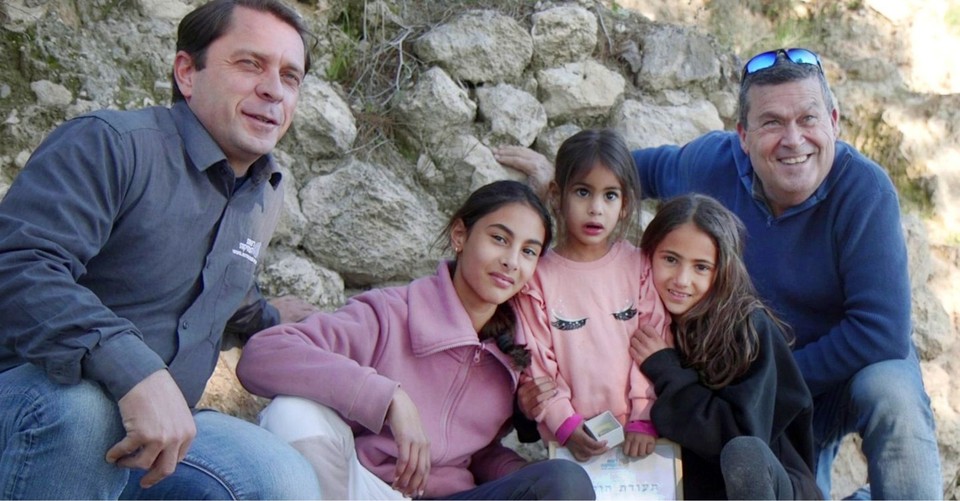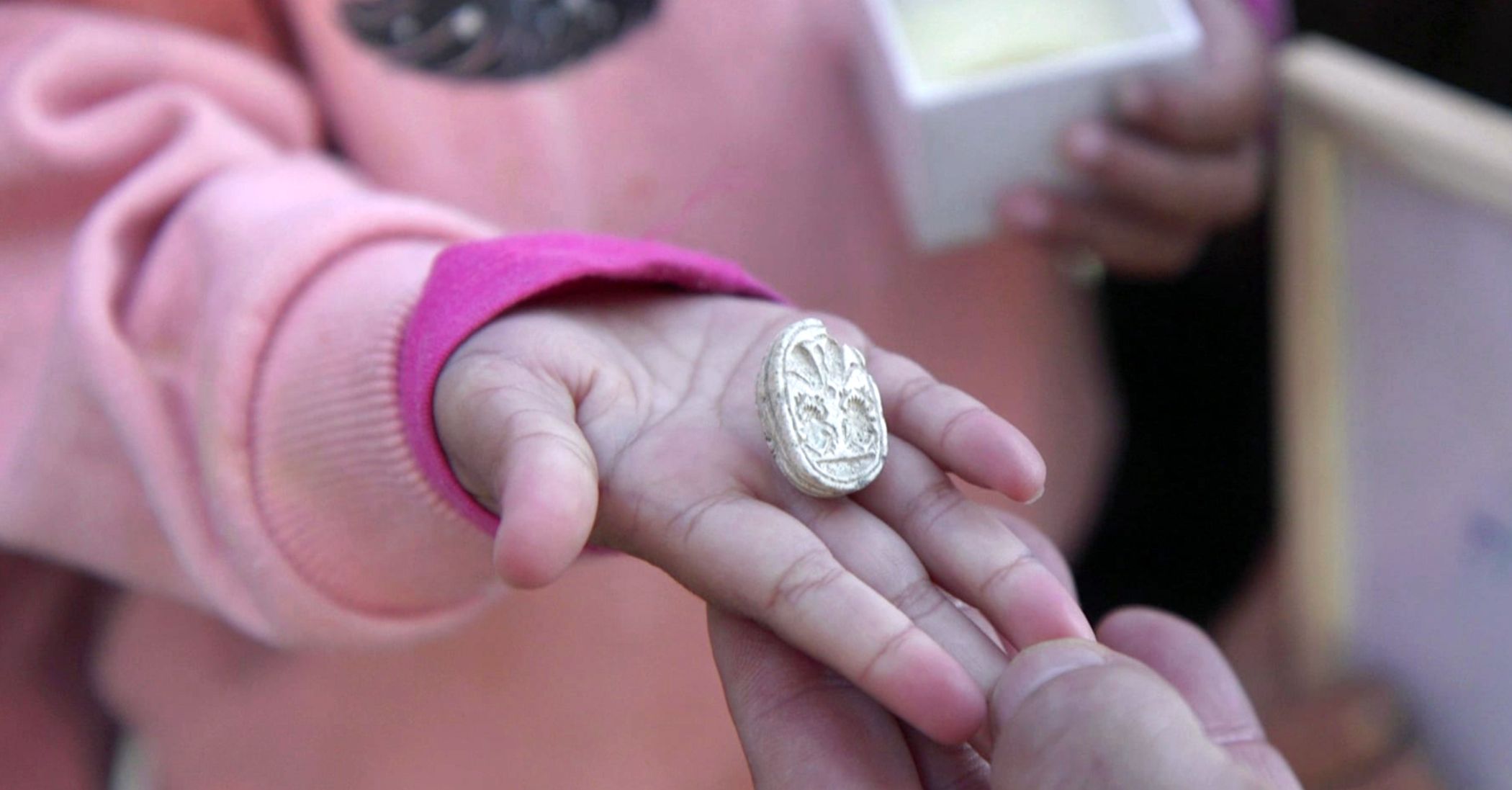Israeli Girl Discovers 3,800-Year-Old Object Linked to Biblical Canaanites

A three-year-old girl on a hike with her family in Israel last month accidentally stumbled upon an ancient treasure dating back to the time of the biblical Canaanites -- centuries before Joshua and the Israelites conquered the Promised Land. Ziv Nitzan, a three-year-old from Moshav Ramot Meir, was walking with her family at Tel Azeka near Bet Shemesh when she picked up an object -- a scarab amulet -- that was later discovered to be around 3,800 years old.
“We were walking along the path, and then Ziv bent down -- and out of all the stones around her, she picked up this particular stone,” said Omer Nitzan, Ziv’s sister. “When she rubbed it and removed the sand from it, we saw something was different about it. I called my parents to come see the beautiful stone, and we realized we had discovered an archaeological find!”
The family contacted the Israel Antiquities Authority, whose archaeological expert, Daphna Ben-Tor, dated it to the Middle Bronze Age and estimated it to be around 3,800 years old -- to roughly 1,800 B.C. Joshua and the Israelites entered the Promised Land around 1,400 B.C., conquering the Canaanites.
The Israel Antiquities Authority said the scarab amulet would have been used by the Canaanites. The small, intricately carved object—shaped like a scarab beetle—would have been worn as jewelry or used to stamp and secure documents or goods.

Photo Credit: ©Facebook/Emil Aladjem/Israel Antiquities Authority
“They were found in graves, in public buildings, and in private homes,” Ben-Tor said. “Sometimes they bear symbols and messages that reflect religious beliefs or status.”
Scarab seals originated in Egypt, although they were used by many surrounding cultures. The scarab or dung beetle was “considered sacred in the eyes of the ancient Egyptians” and was a symbol of new life “because of the dung ball it created and then laid its eggs into it, from which new life would hatch,” IAA said.
Later, Tel Azeka was the site where David slayed Goliath.
“We have been excavating here for almost 15 years, and the excavation findings show that during the Middle Bronze and Late Bronze Ages, here in Tel Azeka, thrived one of the most important cities in the Judean Lowlands,” said Oded Lipschits, director of the Tel Aviv University archaeological dig. He met the young girl and her family. “The scarab found by Ziv joins a long list of Egyptian and Canaanite finds discovered here, which attest to the close ties and cultural influences between Canaan and Egypt during that period.”
Photo Credit: ©Facebook/Israel Antiquities Authority
Michael Foust has covered the intersection of faith and news for 20 years. His stories have appeared in Baptist Press, Christianity Today, The Christian Post, the Leaf-Chronicle, the Toronto Star and the Knoxville News-Sentinel.
Listen to Michael's Podcast! He is the host of Crosswalk Talk, a podcast where he talks with Christian movie stars, musicians, directors, and more. Hear how famous Christian figures keep their faith a priority in Hollywood and discover the best Christian movies, books, television, and other entertainment. You can find Crosswalk Talk on LifeAudio.com, or subscribe on Apple or Spotify so you never miss an interview that will be sure to encourage your faith.
Originally published April 02, 2025.





